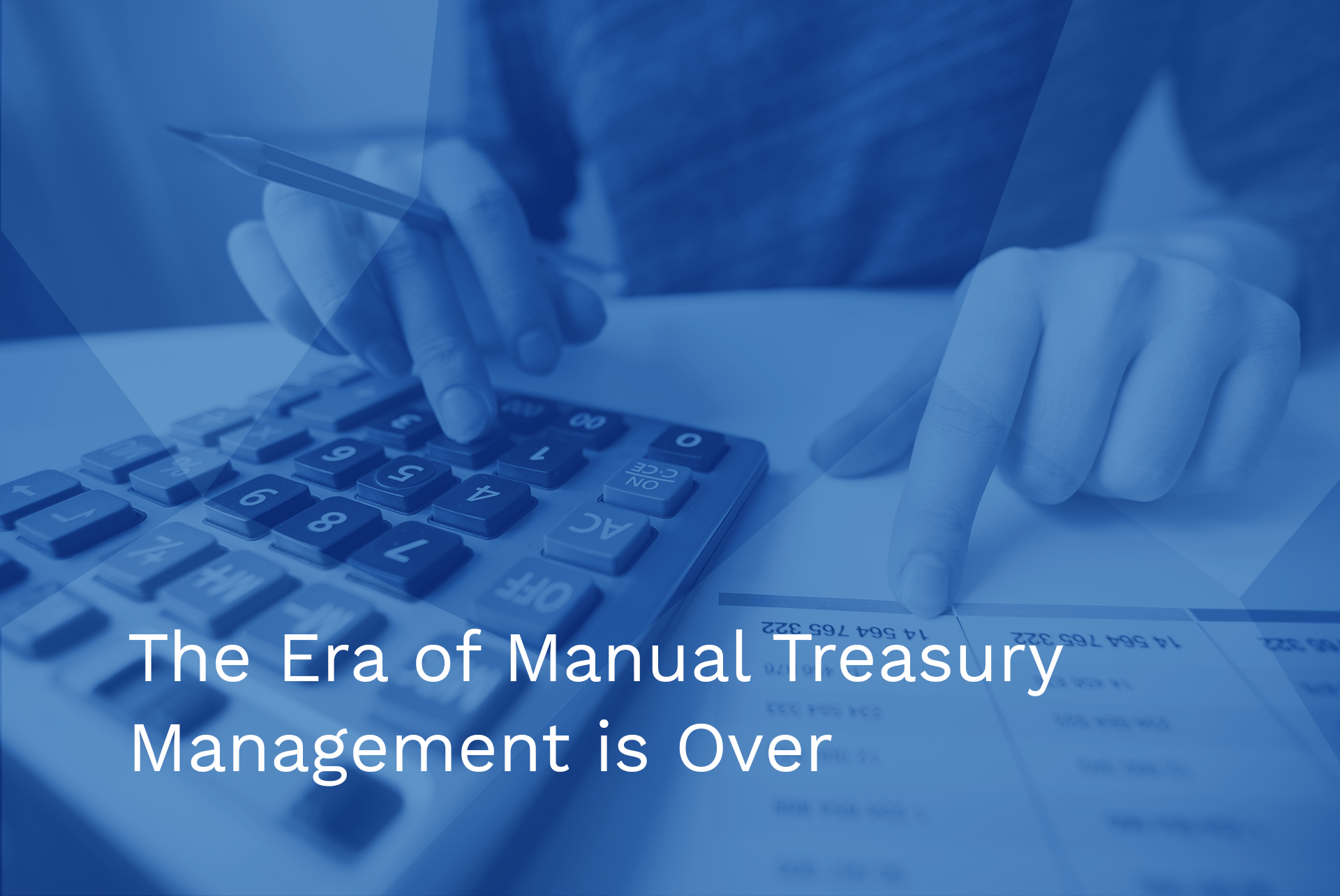
The Era of Manual Treasury Management is Over
Treasury teams are quickly running out of excuses for why their processes should still involve manual components. In our current technological environment, if there is a single operation within your enterprise that should be protected from human error, it’s the handling of transactions. In today’s rapidly changing landscape, many departments are working remotely, and simply having access to quality data when you need it can be a challenge. However, having this data is critical when it comes to automatically reconciling incoming and outgoing payments, and for supporting cash flow forecasting and visibility.
Time and Cost Savings
Legacy accounts receivable (AR) and accounts payable (AP) operations aren’t just inefficient, they’re costly. A study by PYMNTS.com found that “businesses in the U.S. could save 19 hours a week through automating eInvoice processing — and, according to the Federal Reserve, businesses are spending $9 billion every year on paper invoices.”
Reconciling your accounts payable and receivable (AP/AR) with your commercial bank is crucial. It involves both your commercial bank portal and your enterprise resource planning software (ERP), accounting software, or other business system of record. Many organizations are operating with these two systems being independent, which can create a security hole, and require a large amount of manual effort. It’s time to harmonize the two and close the gap.
Manually processing AP/AR using legacy systems and paper-based processes is a reality that CFOs and their teams have grown to accept, with workarounds and massive batch file uploads which can cause the whole payment to fail if there is even one minor error in the file. In most cases there is no real-time visibility into whether it’s working properly- your team only receives a notification that the payment file has failed (and that it’s time to start from square one). In order to remedy these errors and tedious manual processes (and allow your team to focus on more strategic initiatives), it would require that your bank offers a direct connection between your banking portal and your ERP by way of an API. Banks that are using APIs to enhance their offering and enable their commercial clients a better banking experience are driving the digitization of treasury management. Working with a bank that offers this is the easiest way to transform your organization.
The Unseen Pain Points of Manual AP/AR
When your ERP or accounting software is not connected to your business bank by way of an API, your transactions must bridge the gap with the help of one of your team members, often someone several levels down the org chart from your Controller, who is used to managing this with repetitive and tedious data entry.
The volume of these transactions can be immense, making the collection and reconciliation process tedious under the best of circumstances. With no visibility into the process, real-time tracking is not possible. Your Controller doesn’t know the current status, and is unable to communicate it to other departments until things are resolved. While an entry-level employee is wasting their time unnecessarily re-entering the data, your Controller paces and sweats, waiting for confirmation of payments.
In 2020, trusting your single most important business process to a system of manual data entry represents needless overhead and risk. For this reason alone, this needs to stop. The good news is that it can.
Future Proofing Your Department with Automated AP/AR
As a treasurer, now is the time to think about digitization and automation. It doesn’t have to happen all at once, perhaps you start out with visibility and reconciliation of AP/AR, and then move onto other niche areas that can be automated, eventually to the point where you’re adding strategic value to the business.
The first step to getting there is a solution that immediately improves your department's day-to day workflow and eliminates all redundancies from the process. Your business bank should be able to offer you an embedded experience, whereby your bank portal is directly embedded within the ERP-- eliminating duplicate data entry and the need to log in and out of different systems. This connection is made between the bank and ERP by way of an API, so data is seamlessly integrated and updated in real-time, and you are able to carry out key treasury management functions (AP/AR, reconciliation, information reporting) within a fully branded bank portal that is just another tab within your ERP or accounting platform.
All you need to do is simply identify what needs to be paid, select the payment method for each vendor, check a box, and click again to pay them. The ease of use, error reduction, and time and cost savings are immediately apparent. Another benefit is that there is an instantly available audit trail that all of your stakeholders will appreciate.
Your commercial banking activity is now visible in real-time. Your intraday, weekly, and monthly progress are visible; an audit trail that allows you to know where you’re holding cash — right this minute. And maybe that means your Controller can relax a little, watching the entire process as it happens.
To find out whether your commercial bank offers this functionality, contact us.

